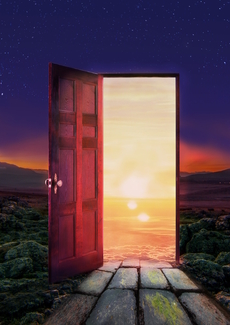Melissa Sarikaya
Death, Immortality, and Rebirth in Harry Potter
Even more than two decades after the first Harry Potter book, its spell is still unbroken. This paper deals with the immortal phenomenon of Harry Potter analysing the topics of death, immortality, and rebirth in a dualistic sense, the literal and the symbolic, while arguing that the narrative structure undermines the significance of trauma to enhance the intended happy end.
In general, death is an essential part of character development for the protagonists; and for Harry Potter in particular, as the permanence of his scar symbolises the curse initiated by his parents’ death. Since Harry’s rags-to-riches story does not work without sacrifices, Harry experiences deaths of multiple people of trust in the symbolic number of three: the father’s death (godfather Sirius Black), the mentor’s death (Prof. Albus Dumbledore), and the friend’s death (Cedric Diggory, Mad-Eye-Moody, Fred Weasley, Dobby, and Hedwig). Besides these literal deaths, there are also symbolic deaths, often being even worse (e.g. the Grangers or Gilderoy Lockhart through memory loss and the Longbottoms through madness). Yet, while symbolic deaths seem to be reserved for side characters, Harry Potter’s fate is to deal with literal death. Death is first and foremost established as means for character development in the Harry Potter series.
Meanwhile, the strife for immortality is used as character judgment. Although literal immortality is associated with brutality and cruelty, symbolic immortality has a surprisingly positive connotation. Literal immortality may be achieved through drinking unicorn blood, creating horcruxes, and making the elixir of life. However, none of these ways are worthwhile as they only imitate a full life but are never true to actual living (which is also re-installed by the ghosts and portraits in Hogwarts). Symbolic immortality is only possible through the memory of loved ones. Harry, for instance, honours the memory of Dumbledore and Snape in naming his children after the “two greatest men he has ever known”. One’s biological reproduction is at least – scientifically speaking – genetic immortality.
Rebirth is also clustered into the literal and the symbolic. The phoenix Fawkes’s actual rebirth in the function of the helper, is a narrative foreshadowing of Harry’s literal rebirth in the ‘afterlife/trainstation’-sequence when Harry meets his mentor Prof. Dumbledore once again. Symbolic rebirth could be seen in the story’s parallels between present, past, and future, as some characters’ fates are reinstored (e.g. orphaned children resulting from the battle of Hogwarts).
The message is quite explicitly stated in the Harry Potter series: Love surpasses everything – but it is not as simple as that. I argue that the fatal outcomes of symbolic and literal deaths (including rebirth and immortality) are cleverly concealed to leave the readers with the triumphant feeling that the good always win. Hogwarts is such a place of reassurance: The wizarding characters and the muggle audience likewise desire the feeling of belonging. Thus, the audience is sheltered from too much negativity and observes the Golden Trio living happily ever after, smiling in fond memories of the ones they lost – while side characters are left with their trauma through narrative omissions.
Melissa Sarikaya has been a lecturer at Friedrich-Alexander-University Erlangen/Nuremberg since 2019 and is currently writing her dissertation on marginalised women poets of the late Victorian era / early Modernist era. Her research interests include contemporary fiction, poetry, gender and queer studies, as well as media studies. Her latest projects are a contribution to a volume on Instapoetry (coming soon, published in Bloomsbury) and the recently published co-edited volume Distinktion, Ausgrenzung und Mobilität – Interdisziplinäre Perspektiven auf soziale Ungleichheit (2022). She is also speaker of the early career scholars/young researchers’ section of the Interdisciplinary Centre for Gender, Difference, and Diversity (IZGDD).







